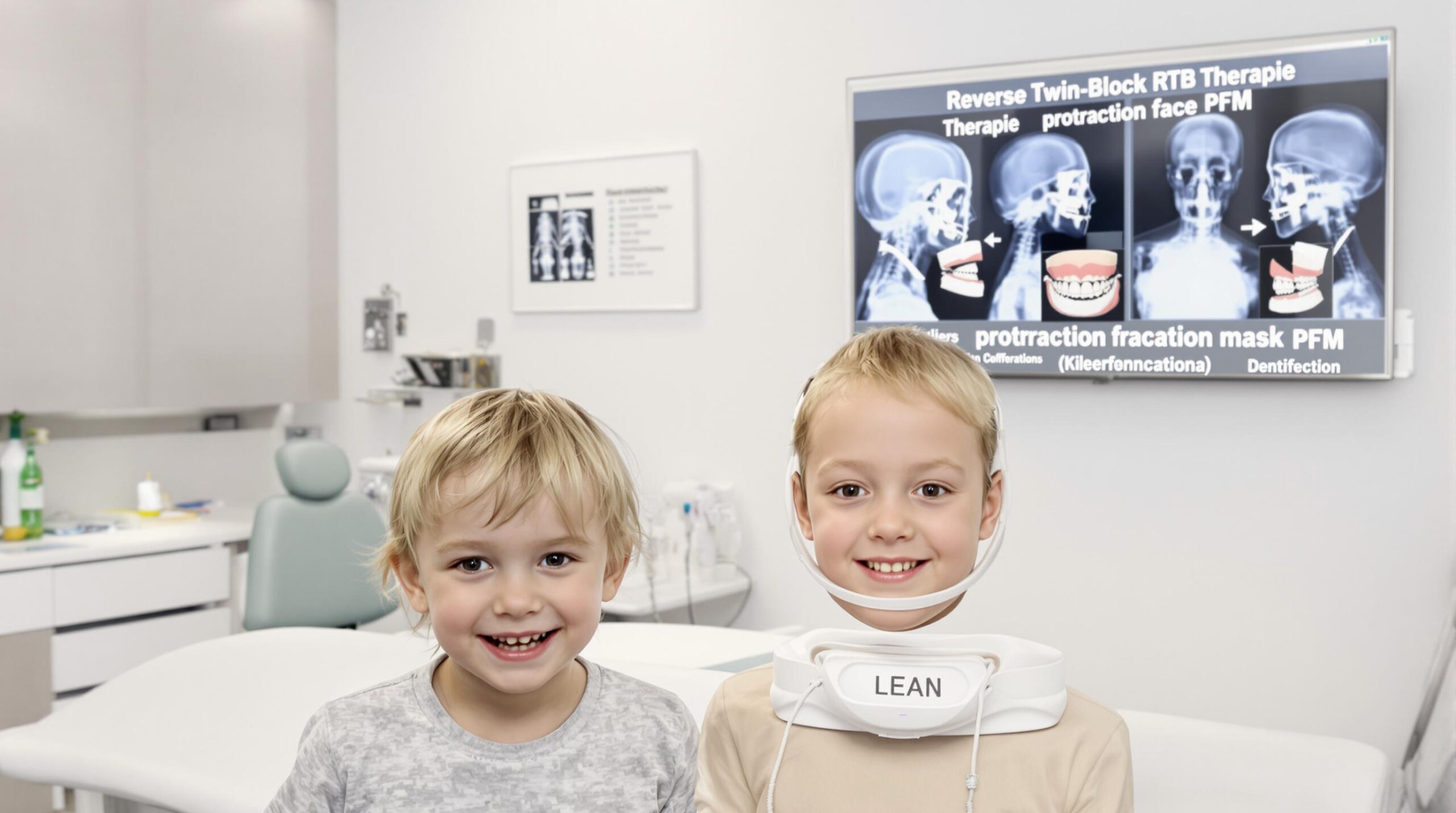When it comes to addressing Class III malocclusion—where the lower jaw extends beyond the upper jaw—orthodontists face no small task. The study at hand delves into two predominant corrective therapies: Reverse Twin-Block (RTB) therapy and Protraction Face Mask (PFM) treatment, offering a comparative analysis against an untreated control group. Utilizing lateral cephalometric radiographs, the research unveils how these therapies orchestrate skeletal and dental transformations to amend Class III discrepancies.
Key Facts
- PFM therapy primarily induces skeletal changes by significantly advancing the anterior position of the maxilla.
- RTB therapy focuses on dentoalveolar modifications, notably altering the position of upper and lower incisors.
- Understanding the differing mechanisms of these treatments helps orthodontists tailor strategies to meet individual patient needs effectively.

Comparison of Reverse Twin-Block and Protraction Face Mask Therapies in Class III Malocclusion
Class III malocclusion, characterized by the protrusion of the lower jaw relative to the upper jaw, presents a significant challenge to orthodontists and dental professionals. This study provides insights into two prominent corrective techniques: Reverse Twin-Block (RTB) therapy and Protraction Face Mask (PFM) treatment, evaluated against an untreated control group. By examining skeletal and dental changes through lateral cephalometric radiographs, this research highlights the mechanisms by which these therapies affect Class III correction.
Analyzing the Effectiveness of Treatment Methods
The primary objective of the study was to assess how PFM and RTB therapies impact the position of the maxilla and mandible, as well as the dentoalveolar region. Subjects in the study included nine patients receiving PFM, thirteen patients undergoing RTB therapy, and a control group of ten untreated individuals. The findings indicated that PFM therapy resulted in significant skeletal changes, specifically advancing the anterior maxillary position. This advancement is critical for correcting the Class III relationship through skeletal modification. Conversely, RTB therapy was associated with dentoalveolar alterations, notably the proclination of upper incisors and retroclination of lower incisors, highlighting its reliance on dental changes over skeletal shifts.
Interpreting the Implications for Orthodontic Treatment
The outcomes of this study emphasize the different mechanisms employed by PFM and RTB therapies in correcting Class III malocclusions. While PFM operates primarily through skeletal advancement, RTB achieves adjustment through dental modification. This differentiation is crucial for practitioners as they formulate treatment strategies. Maintaining treatment success relies on the patient’s growth pattern, which should ideally remain favorable to ensure stability, as untreated Class III malocclusion can deteriorate over time. These insights are invaluable for orthodontic professionals seeking to optimize treatment efficacy by carefully balancing skeletal and dental interventions to cater to individual patient needs.
Tailoring Orthodontic Strategies for Optimal Results
Class III malocclusion presents complex challenges that require precise and well-informed interventions. This study elucidates the distinct pathways through which PFM and RTB therapies facilitate correction. While PFM drives results by advancing the skeletal framework, RTB focuses on dental adjustments to achieve alignment. Practitioners must consider these differences, along with the patient’s growth patterns, to ensure long-lasting success and stability in treatment outcomes. By balancing these approaches strategically, orthodontic professionals can significantly enhance treatment efficacy, thereby offering improved solutions for patients with Class III discrepancies.
References: Seehra J, Fleming PS, Mandall N, DiBiase AT. A comparison of two different techniques for early correction of Class III malocclusion. Angle Orthodontist. 2012.

